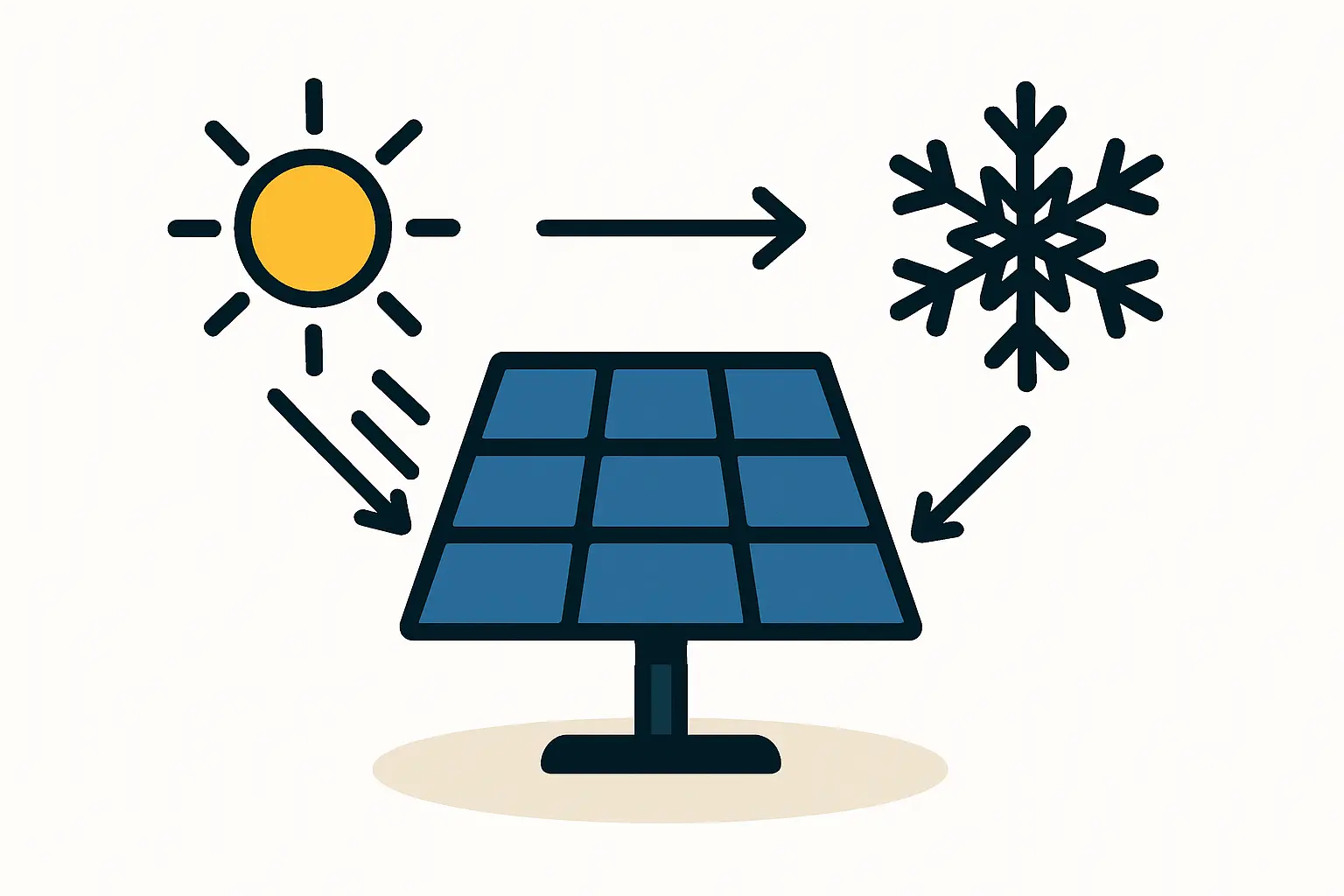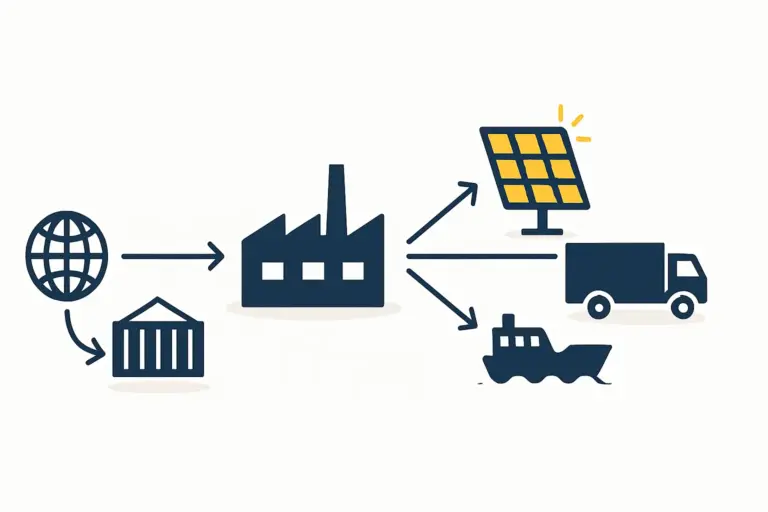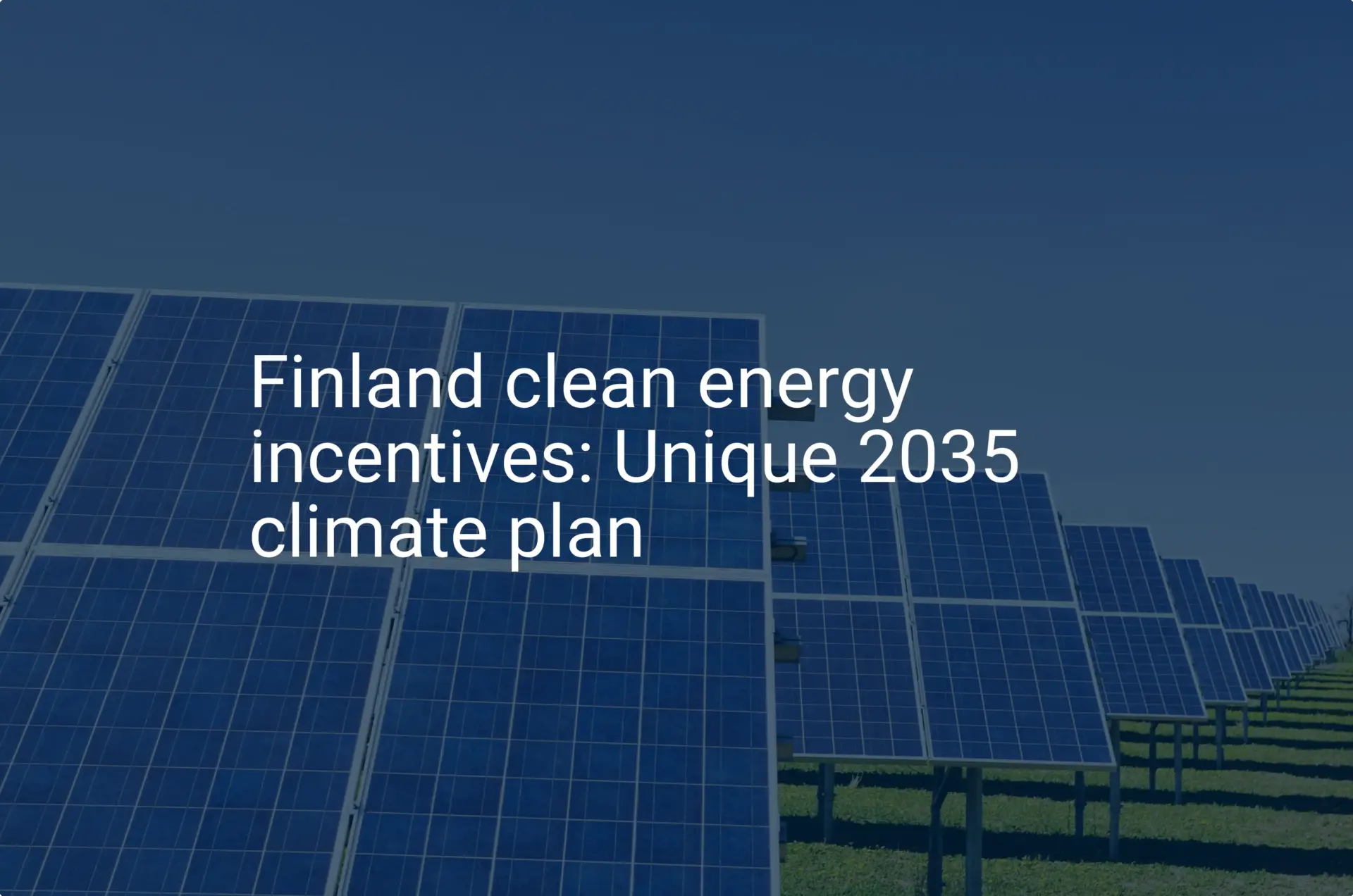While it may seem counterintuitive, Finland is experiencing a significant solar energy boom. The country is on track to expand its solar capacity from 3.5 GW to an estimated 7.5 GW by 2030. This growth presents a unique opportunity for local manufacturing, but it also comes with distinct engineering challenges. Standard solar modules, designed for more temperate climates, often fail to meet the rigorous demands of a Nordic winter.
This guide covers the critical design adaptations needed to manufacture solar modules that not only survive but thrive in environments with heavy snow and low-light conditions. For any entrepreneur considering entry into this specialized, high-potential market, understanding these nuances is the first step.
The Two Core Challenges of Nordic Module Design
Manufacturing for the Finnish market isn’t a simple matter of assembly. It requires a fundamental rethinking of module construction to address two primary environmental factors: extreme mechanical stress and low solar irradiance.
Challenge 1: Extreme Mechanical Stress from Snow Load
Finnish building codes are stringent, and for good reason. A winter’s worth of accumulated snow can exert immense pressure on any structure, including rooftop solar installations. For a solar module to be compliant and insurable, it must be certified to withstand a pressure of at least 5400 Pascals (Pa).
To put this in perspective, 5400 Pa is equivalent to a weight of approximately 550 kilograms distributed over a single square meter. Many standard modules, particularly those with thinner frames designed for markets without significant snowfall, are rated for only 2400 Pa. Using such a module in Finland would pose a structural risk and fail to meet local building and safety regulations.
Challenge 2: Optimizing for Low and Diffuse Light
The second challenge is energy generation during the long winter months, when the sun is low in the sky and daylight hours are short. During this period, a significant portion of the available sunlight is diffuse light—sunlight scattered by clouds and the atmosphere—rather than direct sunlight.
Conventional solar cells, often optimized for direct, high-intensity light, can see their efficiency drop considerably in the overcast, low-irradiance conditions typical of a Nordic winter. A successful Nordic module relies on cell technologies that maintain high efficiency even when the sun isn’t shining brightly.
Engineering Solutions for a Resilient Nordic Module
Overcoming these challenges starts with strategic decisions during the solar panel manufacturing process. A manufacturer must move beyond standard components and embrace designs purpose-built for resilience and low-light performance.
Reinforcing the Foundation: Frame and Glass Selection
The first line of defense against heavy snow load is the module’s physical structure.
Frame Thickness: To achieve the required 5400 Pa rating, a module frame must typically be at least 40 mm thick. This provides the necessary rigidity to prevent the module from bending, warping, or breaking under heavy snow accumulation. Thinner 30 mm or 35 mm frames are generally insufficient for these conditions.
Glass-Glass Construction: A glass-glass (or dual-glass) module, which uses a sheet of glass on the back instead of a conventional polymer backsheet, offers superior mechanical stability. This design is less prone to microcracks caused by physical stress and provides better long-term durability against moisture and temperature fluctuations.

Capturing Every Photon: The Power of Bifacial Technology
One of the most effective strategies for increasing energy yield in snowy regions is using bifacial modules. These modules, which capture light on both their front and back sides, are uniquely suited to Nordic winters due to a phenomenon known as the albedo effect.
Fresh snow has a very high albedo, meaning it reflects up to 80-90% of the sunlight that hits it. A bifacial module installed above a snow-covered surface can capture this reflected light on its rear side, significantly boosting its total energy output. In some cases, this ‘bifacial gain’ can increase the module’s winter energy yield by 20-30%, helping to offset the impact of shorter days.
Choosing the Right Cell Technology for Low-Light Performance
The heart of the module is the solar cell. The choice of cell technology directly impacts how well the module performs in low and diffuse light. While standard PERC (Passivated Emitter and Rear Cell) technology is common, newer technologies offer a clear advantage in Nordic conditions.
TOPCon (Tunnel Oxide Passivated Contact): This technology is becoming a preferred choice for high-efficiency modules. TOPCon cells generally exhibit superior performance in low-light conditions and have a better temperature coefficient, meaning they lose less efficiency in very cold or hot weather.
HJT (Heterojunction Technology): HJT cells are also known for their excellent low-light response and minimal power degradation over time.

Assembling these advanced cells requires precise equipment. For instance, a modern solar cell stringer machine is essential for carefully soldering the delicate connections between TOPCon or HJT cells without causing damage.

The Business Case for Local Manufacturing in Finland
Finland’s market is rapidly shifting from large, utility-scale solar farms to commercial and industrial (C&I) rooftop installations on warehouses, factories, and agricultural buildings. This trend strengthens the case for local manufacturing.
Entrepreneurs who establish production facilities in the region can offer modules specifically designed for local snow loads and light conditions, giving them a clear competitive advantage over importers of standard modules. A ‘Made in Finland’ label also carries significant weight, assuring customers of compliance with local standards and contributing to shorter, more reliable supply chains.
Based on experience from J.v.G. turnkey projects in diverse climates, adapting production to regional needs is a key driver of long-term success. The ability to produce a certified, locally engineered product builds immense trust with commercial buyers who cannot afford the risk of structural failure or underperformance.
Frequently Asked Questions (FAQ)
What exactly is a snow load rating in Pascals (Pa)?
A Pascal is a unit of pressure. The snow load rating indicates the maximum pressure a solar module can withstand without suffering structural damage. A 5400 Pa rating means the module is engineered to handle the heavy, wet snow common in Nordic regions.
Why not just use standard modules imported from Asia?
Most standard modules are designed for global markets and are not built to withstand the specific 5400 Pa snow load requirements of Finnish building codes. Using non-compliant modules can lead to safety risks, voided insurance, and performance issues.
Is bifacial technology worth the extra cost in a Nordic climate?
Yes, in most cases. The significant energy gain from light reflected off snow (the albedo effect) often provides a rapid return on the modest additional investment for bifacial modules, especially during winter months.
How does temperature affect module performance in the cold?
Solar panels are actually more efficient in cold temperatures than in hot ones. The cold Finnish climate is beneficial for module efficiency, provided the module is designed to perform well in low light. A good temperature coefficient, found in technologies like TOPCon, ensures the module capitalizes on this effect.
What is the first step in setting up a specialized manufacturing line?
The first step is a detailed technical and financial feasibility study. This involves defining product specifications (e.g., 40 mm frame, TOPCon bifacial cells), planning the factory layout, selecting the right equipment, and navigating the solar module certification process to ensure the final product meets all local standards like IEC 61215 and IEC 61730 for mechanical load.






